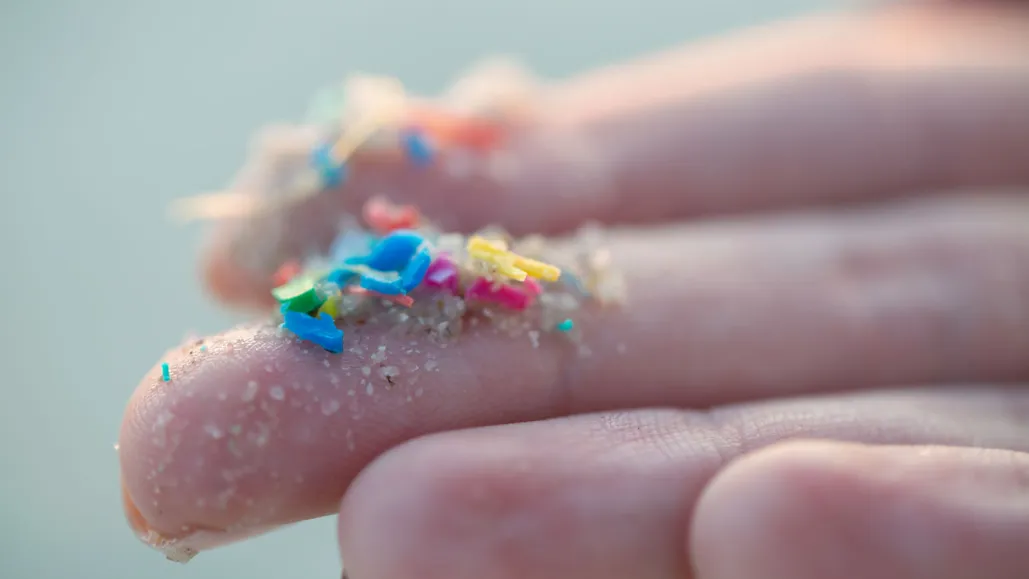Ranging from five millimeters across to sizes almost as small as a water molecule, microplastics have made their way into virtually every facet of our world, from the Mariana Trench to our very own bodies. According to The Guardian, “there’s nowhere left untouched.” And the effects of these materials on our environment and on our very own bodies are shocking.
Our highly inefficient recycling systems and waste treatment plants are the main triggers for our microplastics crisis. Oftentimes, undeniably recyclable plastics are “ignored” by recycling companies, or aren’t being properly captured and filtered out of treated waste. Sometimes, current processing techniques also break down normal plastic waste into microplastics, exacerbating the issue. Issues like these allow plastics to make their way back into the environment through wind, water discharge, and other forms of runoff.
Thus, over 80% of all plastics end up in our environment. And as these plastics break down, they end up releasing BPA, a dangerous industrial chemical used in the production of plastics, and other harmful chemicals in the process—88% of which have leached into water. For these microplastics, along with their chemicals, the sky’s the limit to what they can actually contaminate.
For years, our microplastics crisis has been apparent in the form of soil, plant, and water contamination. But now, they’re more prominent in literally every facet of our lives. A 2018 study found that 100% of mussels in the ocean and other major seafood that we consume contain microplastics.

What’s more, microplastics have been discovered to reside in human bodies.
And it isn’t just in one-off examples. Microplastics have been found in our bloodstreams, lungs, and other organs. They’re inevitably in all of our bodies, and while our digestive and excretory systems are usually able to cope, it isn’t always the case.
Microplastics can also induce allergic reactions, destroy human cells, and can even act as hormone and molecular disruptors that mess with internal functions.
Unfortunately, this leads to a plethora of other harmful health issues, including reproductive effects and even Alzheimers-like symptoms.
Microplastics don’t just jeopardize our physical health, but also take a toll on our neurological fitness. The Guardian reports that in a study conducted this year, “researchers found that [out of] 24 brain samples… [all of them] measured on average about 0.5% plastic by weight.”
Even worse, a recent study by the National Institute of Health found that babies can be exposed to microplastics from the placenta during their fetal stage, or even from milk when breastfeeding.
But how did we even get here? Recent studies find that as microplastics are picked up by the wind, airborn inhalation allows microplastics to enter our circulatory and cardiovascular systems, almost like viruses. Moreover, the chemicals released by microplastics have been found in 93% of our water bottles—a clear-cut pass into our bodies.
 On the flip side, as microplastics move up the food chain into human food, the concentration in the prey’s body actually increases. By the time microplastics reach the animals, plants, or water we consume, they can easily enter our organs in highly-concentrated doses.
On the flip side, as microplastics move up the food chain into human food, the concentration in the prey’s body actually increases. By the time microplastics reach the animals, plants, or water we consume, they can easily enter our organs in highly-concentrated doses.
Meanwhile, corporations continue their resistance to any transitions away from plastics, going so far as spending millions of dollars to keep things going their way. For example, during the negotiations for a UN global plastics treaty, companies have spent tens of millions of dollars in hopes of stalling action. Oftentimes, the amount of lobbyists actually outnumber the delegates, scientists, and activists present.
Our microplastics crisis is a vicious cycle. First, the government subsidizes much of the plastic industry on a much grander scale than it does to any sort of alternative. Tens of billions of dollars in taxpayer money are being spent on these plastics that are extremely detrimental to their health. The government still hasn’t cut back on plastic production funding, even when plastic corporations make clear illegal turns.
All of these companies understand the adverse effects of plastic pollution and microplastics. But for them, it’s simply a means to a profit.
What’s more, the majority of plastic plants are built near marginalized communities. In fact, a study conducted by the NAACP examining 50 power plants built after 2012 found that an overwhelming two-thirds of the residents were people of color. This proximity means that these people feel the dangerous effects of plastics to a higher magnitude than anyone else.

And on top of all of this, the new Trump administration will most likely worsen this issue. During his previous term, Trump proved that he was willing to put nearly anything over the environment, dismantling more than 100 policies, many of which focused on improving plastic pollution.
In his previous term, he withdrew the United States from the Paris Climate Accords, and he is likely to bring more turbulence to other international agreements as well—ironically, considering he has plastics inside his own body.
In a worst-case (but not so far away) scenario, Trump may dismantle the efficiency and success of these agreements. Being the world power we are, several other countries see the United States as an example and a leader. If the US, one of the world’s biggest breeding grounds for microplastics, isn’t even willing to take action for a global microplastic injustice, we can’t expect other countries to.
We didn’t ask for plastics in our body—or in our ecosystems, for that matter—but now, we depend on getting rid of them. Despite the unclear path forward, we must continue to advocate for change, pressuring our political and corporate leaders to reverse the danger of these tiny plastics. For all of us.

